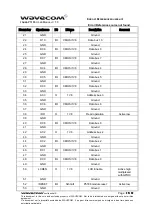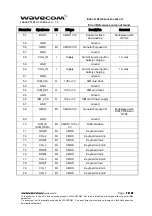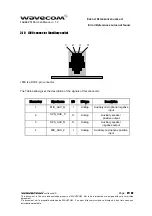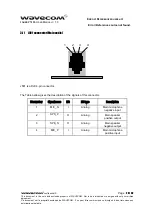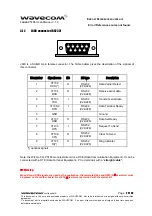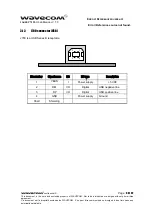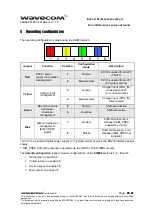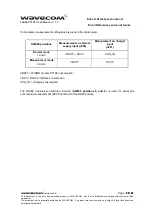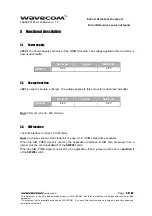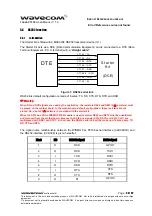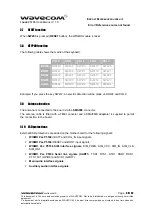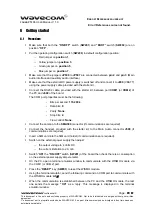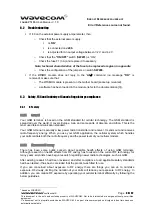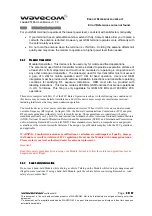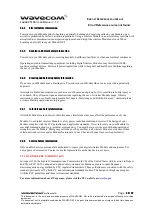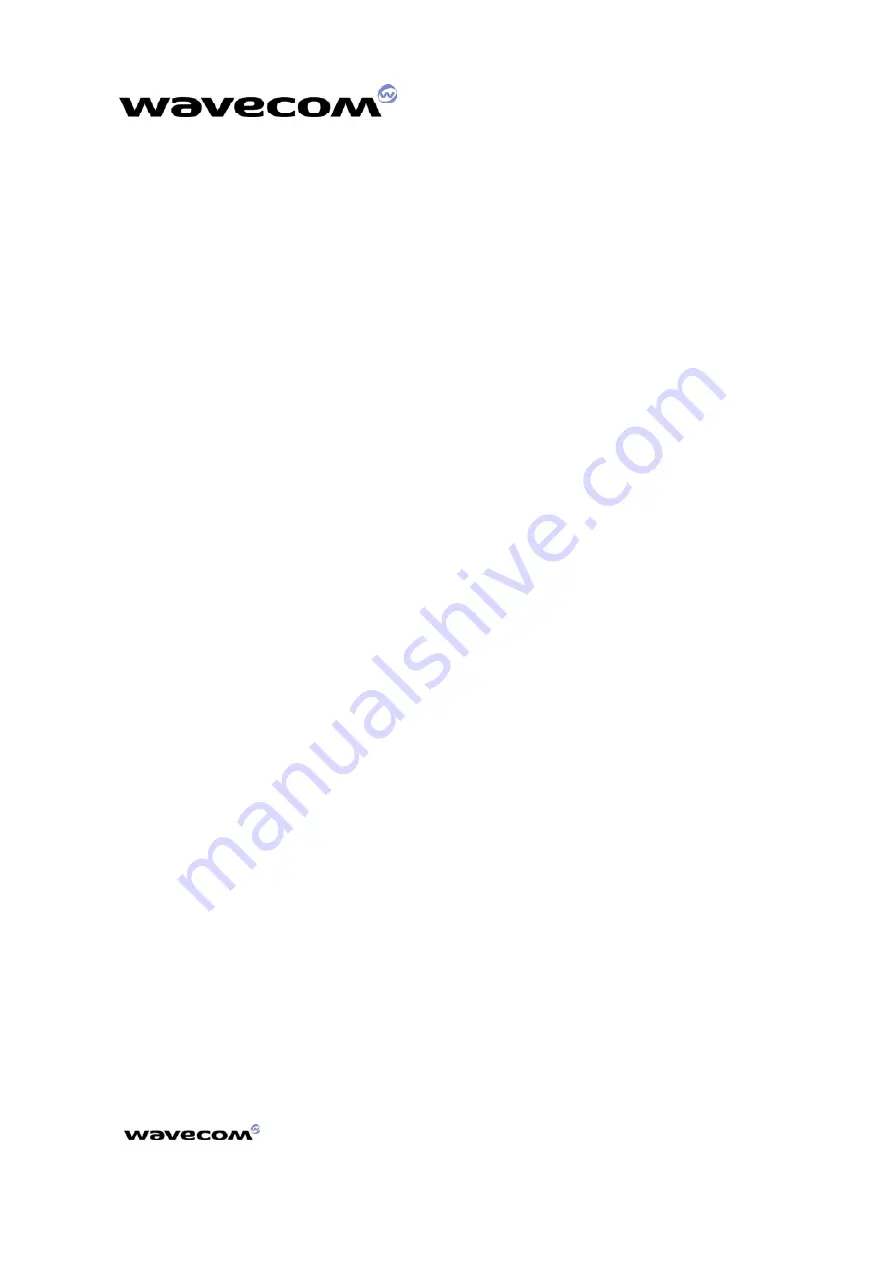
E
RROR
! R
EFERENCE SOURCE NOT
FOUND
.
P5186 U
SER
M
ANUAL
V 1.0
Error! Reference source not found.
6.3.1.3
Efficient terminal operation
For your GSM terminal to operate at the lowest power level, consistent with satisfactory call quality:
•
If your terminal has an extendible antenna, extend it fully. Some models allow you to place a
call with the antenna retracted. However your GSM terminal operates more efficiently with
the antenna fully extended.
•
Do not hold the antenna when the terminal is « IN USE ». Holding the antenna affects call
quality and may cause the modem to operate at a higher power level than needed.
6.3.2 Modular
Transmitter
Modular transmitter. This device is to be used only for mobile and fixed applications.
The antenna(s) used for this transmitter must be installed to provide a separation distance of
at least 20 cm from all persons and must not be co-located or operating in conjunction with
any other antenna or transmitter. The antenna(s) used for this transmitter must not exceed
a gain of 3 dBi for mobile operation and 7 dBi for fixed operation. Users and OEM
integrators must be provided with antenna installation instructions and transmitter operating
conditions for satisfying RF exposure compliance. OEM must also be provided with
labelling instructions. This device contains 900 MHz GSM functions that are not operational
in U.S. Territories. This filing is only applicable for GSM 850 MHz and 1900 MHz PCS
operations.
This device complies with Part 15 of the FCC Rules. Operation is subject to the following two conditions: (1)
this device may not cause harmful interference, and (2) this device must accept any interference received,
including interference that may cause undesired operation.
Your mobile device is a low power radio transmitter and receiver. When it is ON, it receives and also sends
out radio frequency (RF) signals. In August 1996, the Federal Communications Commission (FCC) adopted
RF exposure guidelines with safety levels for mobile device. Those guidelines are consistent with safety
standards previously set by both U.S. and international standards bodies: American National Standard Institute
(ANSI), National Council of Radiation Protection and Measurements (NCRP), and International Commission
on Non-Ionizing Radiation Protection (ICNRP). Those standards were based on comprehensive and periodic
evaluations of the relevant scientific literature. The design of your Module complies with the FCC guidelines
and applicable
WARNING: Unauthorized antennas, modifications, or attachments could impair call quality, damage
the Module, or result in violation of FCC regulations. Do not use the Module with a damaged antenna.
Please contact your local authorized dealer for antenna replacement.
Important!
Read these safety guidelines prior to using your Module. Failure to follow these rules and guidelines may be
dangerous and/or illegal.
6.3.3
Road Safety Information
Do not use a hand-held Module while driving a vehicle. Talking on the Module while driving is dangerous and
illegal in some locations. If using a hand-held Module, park the vehicle before conversing. Remember – road
safety
always
comes first!
confidential ©
Page :
39 / 42
This document is the sole and exclusive property of WAVECOM. Not to be distributed or divulged without prior written
agreement.
Ce document est la propriété exclusive de WAVECOM. Il ne peut être communiqué ou divulgué à des tiers sans son
autorisation préalable.

